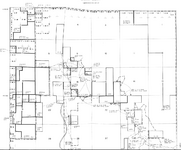Hey guys. I want opinions. Lately, I've been researching the best places to metal detect for gold in California, and have a few good spots, but the spots are huge tracts of open land. I mean huge. Some are at the base of mountains. Some are literally 20 miles from civilization. Here are my questions:
1. How do I find out who owns it?
2. How would anyone know if I parked my truck 5 miles away from my target site and went off into the woods with an ATV. It's not even close to civilization... ? Not saying I'm going to do this, but I feel like it's so sparse out there, no one would ever know especially if I am 5 miles into the mountains.
3. If BLM does own it, am I allowed on it as long as it's not some historic site or national park?
Just curious.
1. How do I find out who owns it?
2. How would anyone know if I parked my truck 5 miles away from my target site and went off into the woods with an ATV. It's not even close to civilization... ? Not saying I'm going to do this, but I feel like it's so sparse out there, no one would ever know especially if I am 5 miles into the mountains.
3. If BLM does own it, am I allowed on it as long as it's not some historic site or national park?
Just curious.
Upvote
0






